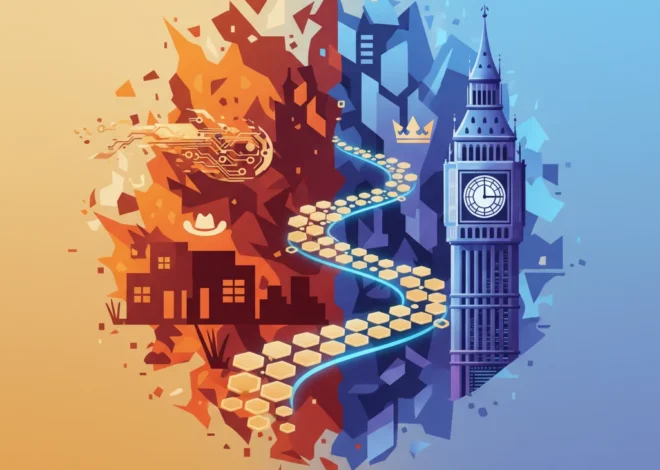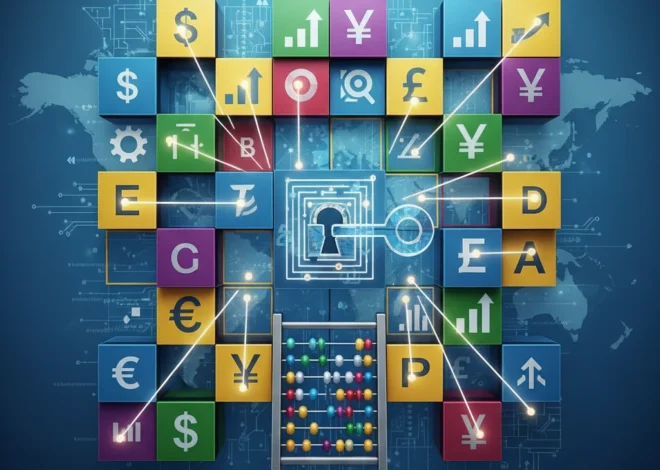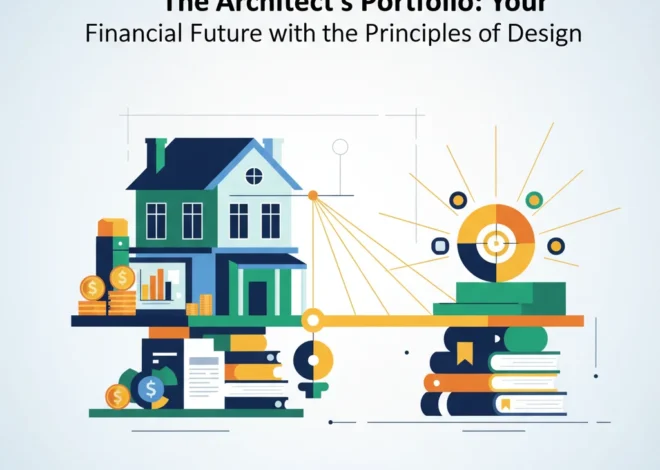
The Silver Brick and the Soul of Modern Finance: What a Doorstop Teaches Us About Value
In a thought-provoking letter to the Financial Times, Sandip Tiwari, a Professor in Engineering at Cornell University, shared a simple yet profound anecdote about his “silver brick doorstop.” This hefty piece of metal, a relic of a time when wealth was tangible and weighty, serves a mundane purpose. Yet, it sits in stark contrast to the modern financial world, where his bank balance is nothing more than an “electronic promise” – a series of digits on a screen. Professor Tiwari’s observation, though brief, cuts to the very core of a question that defines our modern economy: What is money, and where does its value truly reside?
The journey from a physical silver brick to a digital entry in a bank’s ledger is not just a story of technological advancement; it’s the story of humanity’s evolving relationship with the concept of value itself. It is a narrative of abstraction, trust, and the relentless pursuit of efficiency that has reshaped everything from daily commerce to global investing and economics. By exploring the path from tangible assets to digital promises, we can gain a deeper understanding of the foundations of our current financial technology and glimpse the future of finance.
From Barter to Bullion: The Age of Tangible Value
For most of human history, value was something you could hold. It was a bag of grain, a herd of cattle, or a shell from a distant shore. This system of barter, however, was incredibly inefficient. It required a “coincidence of wants” – you had to find someone who not only had what you wanted but also wanted what you had. The solution was commodity money: goods with intrinsic or widely accepted value that could act as a universal medium of exchange.
Precious metals like gold and silver became the ultimate form of commodity money. They were durable, divisible, portable, and scarce enough to be valuable. Professor Tiwari’s silver brick is a direct descendant of this era. Its value isn’t derived from a government decree or a complex algorithm; it is inherent in its physical properties as a metal with industrial and ornamental uses. It perfectly fulfills one of the three core functions of money: a store of value. It will not rot, it cannot be erased by a power outage, and its existence is not dependent on any single institution. This physicality provides a psychological comfort that an “electronic promise” can never fully replicate.
This concept of tangible assets as a bedrock of wealth remains potent. Even in our advanced digital economy, investors flock to gold and other commodities during times of uncertainty. According to the World Gold Council, total annual gold demand in 2023 reached 4,899 tonnes, the highest on record, driven by strong market and central bank buying, showcasing a persistent global faith in physical assets.
The First Abstraction: Ledgers, Trust, and the Birth of Banking
Carrying around silver bricks to buy groceries is, to put it mildly, impractical. The next great leap in finance was the creation of a system to represent that value without physically moving it. This was the birth of currency and the modern banking system. A goldsmith, and later a bank, would store your silver brick in a secure vault and give you a paper receipt, or banknote, that promised you could redeem it for the real metal at any time.
This was a monumental abstraction. The paper itself was worthless; its value came from the promise it represented and, crucially, the trust people had in the institution that issued it. The most important innovation here wasn’t the paper—it was the ledger. The bank kept a meticulous record, a central source of truth, of who owned which claim on the silver in its vault. Our entire global financial system, from the stock market to your checking account, is built upon this foundational concept of a centralized ledger managed by a trusted third party.
Professor Tiwari’s “electronic promise” is the direct, digital evolution of this paper promise. The underlying principle is the same: we have traded the inconvenience of physical assets for the efficiency of a representation of value, placing our trust in the institutions that manage the ledgers.
The Digital Promise: When Money Became Pure Information
The 20th and 21st centuries saw the near-total dematerialization of money. Credit cards, wire transfers, and online banking platforms turned financial transactions into a flow of pure data. The “electronic promise” became the dominant medium of exchange, unit of account, and store of value for the vast majority of the global economy.
The scale of this digital transition is staggering. The Bank for International Settlements (BIS) reported that the value of retail electronic payments is growing exponentially worldwide, with digital wallets and mobile payments leading the charge. In many advanced economies, the use of physical cash is in a steep decline. According to a 2022 Pew Research Center survey, about 41% of Americans say they don’t use cash for any of their purchases in a typical week.
This digital ecosystem offers unparalleled speed and convenience for everything from global trading to buying a cup of coffee. However, it also concentrates immense power and responsibility in the hands of the financial institutions that maintain the digital ledgers. The comparison below illustrates the trade-offs between different forms of value.
A Comparison of Value Forms: From Physical to Digital
| Attribute | Physical Asset (Silver Brick) | Fiat Currency (Banknote/Digital USD) | Decentralized Digital Asset (Bitcoin) |
|---|---|---|---|
| Basis of Value | Intrinsic physical properties | Government decree (“fiat”) and trust in institutions | Network consensus, cryptography, and scarcity |
| Controlling Entity | The physical owner | Central Bank / Government / Commercial Banks | Decentralized network of users |
| Portability | Low (heavy and bulky) | High (physical and digital) | Extremely High (purely digital) |
| Counterparty Risk | Low (risk of theft) | Moderate (bank failure, inflation) | High (protocol failure, volatility, self-custody risk) |
| Transaction Method | Physical exchange | Physical exchange or via trusted intermediary (bank) | Peer-to-peer over a distributed network |
The Investor's Gambit: Why 'Uncanny Timing' is a Myth in a Volatile Market
The New Frontier: Blockchain and the Future of the Ledger
If the bank ledger was the great innovation of the last millennium, blockchain technology may be the great innovation of this one. At its heart, a blockchain is simply a new type of ledger. But instead of being held secretly on a bank’s private server, it is distributed across thousands of computers, secured by cryptography, and updated by consensus. It is an “electronic promise” without the single promiser.
This technology attempts to deliver the best of both worlds: the peer-to-peer, owner-controlled nature of a physical asset like a silver brick, combined with the speed and borderless nature of a digital transaction. It is the technological foundation for cryptocurrencies, but its implications for finance are far broader. It enables concepts like smart contracts, decentralized applications (dApps), and the tokenization of real-world assets, potentially revolutionizing everything from stock market settlement to supply chain management. This wave of fintech innovation is built on the idea of replacing institutional trust with technological trust.
Of course, this new frontier is not without its perils. Volatility, regulatory uncertainty, and security risks are significant challenges. As stated by the U.S. Securities and Exchange Commission, investments in crypto assets remain highly speculative and are subject to numerous risks. The journey toward a mature, decentralized financial system is still in its infancy.
The Polymath Investor: Decoding the Modern Economy Like a Crossword Puzzle
Revisiting the Doorstop: The Enduring Search for Security
This brings us back to Professor Tiwari’s silver brick, faithfully holding a door open. In a world defined by abstract, electronic promises, does this tangible lump of metal still hold a lesson for us? Absolutely.
The silver brick is a reminder that every financial system, no matter how complex or technologically advanced, is ultimately a human construct built on a foundation of trust. When that trust is shaken—by inflation, by institutional failure, or by systemic risk—people instinctively search for something real. The enduring appeal of gold, real estate, and other hard assets is a testament to this deep-seated human need for a store of value that exists outside the system of promises.
For investors and business leaders, the lesson is one of balance. The efficiency and opportunity of the digital economy are undeniable, but a prudent approach to risk management acknowledges the fragility of abstract systems. The silver brick represents diversification not just across asset classes, but across philosophical concepts of value—a hedge against the failure of the “electronic promise.”
Conclusion: The Promise and the Brick
The evolution of money from a silver brick to a blockchain entry is a powerful chronicle of human ingenuity. Each step has been a trade-off, sacrificing the certainty of the physical for the convenience of the abstract. We have built a global economy of breathtaking complexity and speed on a series of electronic promises, managed by ledgers we trust but rarely see.
As we stand on the cusp of another potential transformation driven by fintech and decentralized technologies, Professor Tiwari’s simple observation serves as a crucial anchor. The future of finance will likely not be a complete victory for either the tangible brick or the ethereal promise, but a dynamic and often tense coexistence between the two. Understanding the nature of both is the first step toward navigating the complex and exciting financial landscape of tomorrow.


